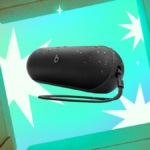Unlocking the Power of Interactive Collectible Maps in Video Games
Searching for game guides is a frequent activity, often dominating online search queries. The vast array of quests, mechanics, statistics, and even romance options in various games can be overwhelming. This complexity is precisely why the value of collectible maps has surged recently. These interactive resources allow players to discover, filter, and track countless items within games, all tailored to the specific landscape of each game’s world.
Chances are, you’ve encountered collectible tracking tools while searching for specific items, perhaps asking, “Where can I find that last manuscript page in Alan Wake II?” Many traditional guides featuring lists and images also link to interactive maps, providing a comprehensive top-down view of every collectible you seek.
While they’re typically labeled as “collectible trackers,” these maps actually serve as databases that reveal locations for a wide range of in-game elements. They can help locate characters, icons for quests, shops, and upgrades, making them indispensable for gamers.
For an Extensive Game Library: IGN’s Interactive Maps
If you’ve used any collectible tracker, it’s likely one from IGN. It’s common to stumble upon a walkthrough of a game level via IGN during your online journey. One feature you might have missed is the set of interactive tools displayed at the top of those pages, overlaying essential information on the game’s map. Users can click on various points of interest and even track which items they have already collected. Notably, this information is synced with their written guides. (Note: Ziff Davis, which also owns DailyHackly, is the parent company of IGN.)
With over 200 games cataloged, IGN stands out with the largest collection of collectible tracking resources. This includes newer titles such as Doom: The Dark Ages, providing comprehensive data almost immediately upon release. The availability of information may shift based on a game’s popularity, release timeline, and the intricacy of tracking its content. However, for those seeking an extensive tracker, IGN is the most reliable option.
One limitation: while browsing their maps is complimentary, checking off only 50 items is permitted without a subscription to IGN Plus. For an annual fee of $30 or $5 monthly, subscribers gain the ability to mark off unlimited items, jot down personal notes, and enjoy an ad-free experience. For avid sandbox players, this might justify the cost.
A More Affordable Alternative: Map Genie
Map Genie offers a comparable service to IGN’s maps with a nearly equivalent selection of games but at a significantly reduced subscription price. Like IGN, Map Genie restricts users to checking off 50 items for free, yet it provides unlimited access and an ad-free environment for just $10 annually.
Interestingly, Map Genie is also under the IGN umbrella. So why consider it over IGN? While Map Genie features many of the same games, some popular titles like Bioshock and Cyberpunk 2077 are exclusive to IGN.
Additionally, with a Map Genie subscription, users can access maps for in-progress games such as upcoming titles like Hollow Knight, Control, and The Legend of Zelda: Wind Waker. Overall, while both services have their merits, individual game tracking needs could determine which platform suits you better.
For Free Tracking on Fewer Games: GameTrek
GameTrek offers a limited library, currently hosting only 18 games. However, it comes with a significant advantage: it’s entirely free. Users can track collectibles, write personal notes, and filter items on the map without any cost. An account is required to start tracking, but no payment is needed.
The library is expanding steadily, having recently included guides for new titles such as Doom: The Dark Ages and Clair Obscur: Expedition 33, in addition to established favorites like The Last of Us Part II. While there are coverage gaps, the absence of a fee makes it hard to compete with.
Exploring Another Free Option: Fan Sites like Zelda Dungeon
Creating interactive collectible trackers is labor-intensive, often yielding modest profits. If the annual fees mentioned sound steep, this highlights the dedication of passionate enthusiasts devoted to detailing their favorite games. Various fan-driven websites focus on specific franchises, often offering robust mapping and tracking resources.
Zelda Dungeon exemplifies this dedication. It features guides for every installment of the Legend of Zelda series and includes interactive maps for various games like Breath of the Wild, Tears of the Kingdom, as well as the latest Echoes of Wisdom.
These maps cover various collectibles, from Lightroots to all 1,000 Korok seeds, and users can mark items as completed without creating an account. However, signing up allows tracking across devices, making it one of the more generous options available for collectible tracking.
Depending on the game or franchise in question, dedicated forums, subreddits, or fan sites are invaluable resources for interactive maps or guides. Exploring these platforms can yield excellent tools for tracking collectibles and enhancing the gaming experience.












